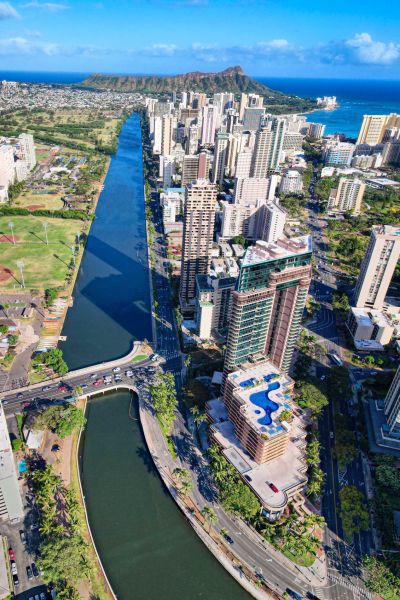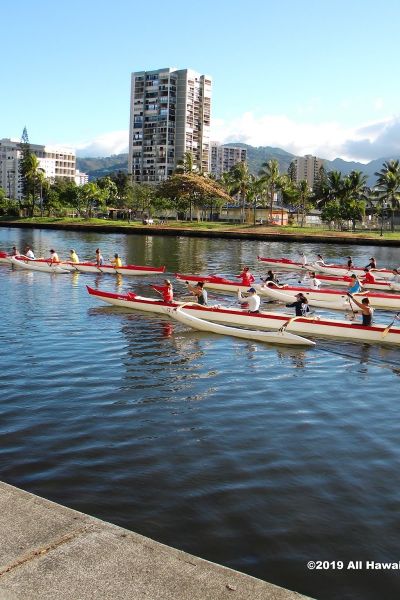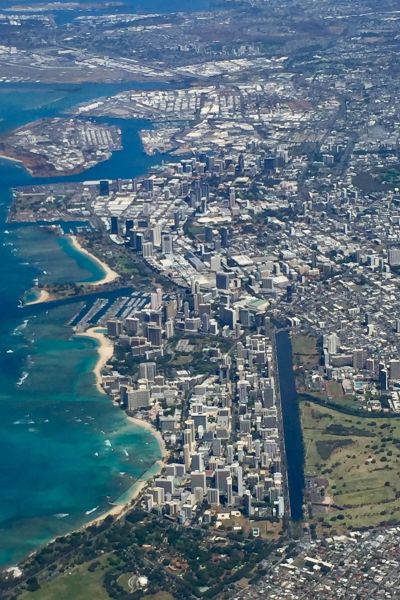Ola Waikīkī
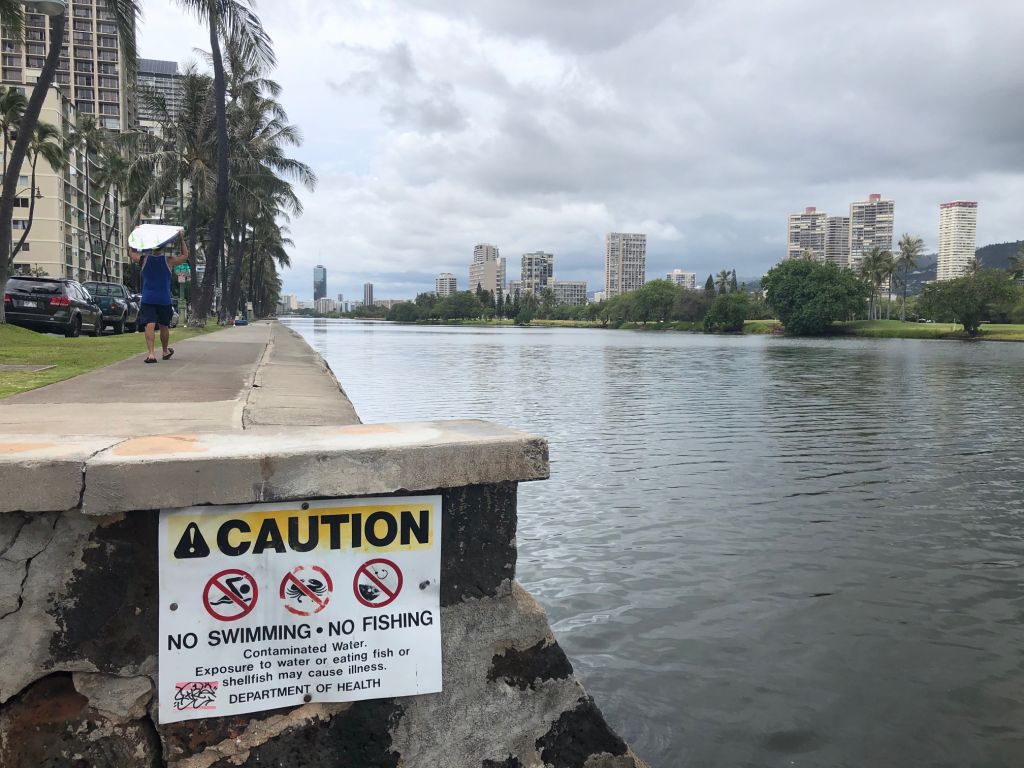
Ola In Hawaiian, means well-being, living, thriving, and healthy—but it also connotes salvation, healing, and survival.
This project is focused on addressing water quality issues in the Ala Wai Canal, a chronically polluted man-made waterway in the lower portion of the Ala Wai watershed.
Water quality conditions have degraded as a result of upstream urbanization, ecosystem loss, and waterway channelization. An increase in impervious surfaces restricts the movement of water into the ground, instead encouraging it to flow over the surface and into the lower watershed. As it moves, the water picks up contaminants.
Natural resources face pressures from urban development, invasive species, and polluted stormwater runoff. The Ala Wai Canal in particular suffers from severe pollution, including sedimentation, bacteria, heavy metals, organic debris, and trash that are generated on both private and public properties throughout the watershed and carried by water from mountains to sea.
What is Green Stormwater Infrastructure?
Green stormwater infrastructure is a collection of design strategies that mimic nature to manage and treat stormwater. Traditional ‘gray’ infrastructure uses vast networks of street drains, pipes, ditches, and canals to convey stormwater away from urban areas. Green stormwater infrastructure encourages water to infiltrate into the ground, minimizing and slowing the flow of runoff, and removing contaminants. Honolulu has a traditional ‘gray’ stormwater network, but there is an increasing recognition of the potential ecologic, economic, social, and cultural value of green alternatives.
There are many synonyms for green solutions. This project broadly defines green stormwater infrastructure as being inclusive of:
- Green infrastructure: systems designed by humans to mimic natural functions and infiltrate water into the ground as close to where it falls as possible (ie, rain gardens, bioswales, water catchment systems)
- Nature-based Solutions: the protection, management, or restoration of natural or impacted ecosystems (ie, planting native trees, wetland and streambank restoration)
- Bio-cultural restoration: the restoration of ecosystems with deep connections to culture and place (ie, native food, lei, and medicinal gathering forests, expansion of lo’i kalo, fishpond restoration)
Learn More: Green Infrastructure for Stormwater Management
Supporting Demonstration Projects
Hawai’i Sea Grant recognizes that communities hold the knowledge and understanding of their places. In order to support nature-based solutions to the watershed’s biggest challenges, Hawai’i Sea Grant has distributed competitive grants to five organizations who are interested in installing, maintaining, and educating the public about a green stormwater infrastructure project within the watershed.
| Project | Lead Organization | Brief Summary | Point of Contact |
| Aliʻiolani Elementary School Cafeteria Rain Garden | Hawaii Green Growth UN Local2030 Hub (HGG) | This project involves installing a rain garden in front of Aliʻiolani’s cafeteria, designed to capture approximately 80,000 gallons of rainwater annually and serve as a demonstration site for green stormwater infrastructure. This initiative will serve as a hands-on learning resource for students and community members, fostering long-term education on stormwater management. The effort aims to promote environmental stewardship in Pālolo and inspire similar initiatives in neighboring communities. | cyrus@hawaiigreengrowth.org |
| Increasing Urban Tree Canopy at Jarrett Middle School to Mitigate Flooding Impacts in Pālolo Valley and the Ala Wai Watershed | The Outdoor Circle | This project involves planting large shade trees at Jarrett Middle School to mitigate the impacts of significant rain events, helping to reduce flooding in Pālolo Valley and the broader Ala Wai Watershed. Rain gauge data will be used to demonstrate the effectiveness of these trees in reducing stormwater runoff. Beyond flood prevention, the trees will provide secondary benefits, including increased shade across the campus and the creation of a small arboretum where students can explore and learn about the environmental and ecological benefits of the planted species. | myles@outdoorcircle.org |
| M&M (Maintaining & Monitoring) the Kaimukī Rain Garden | Trees for Honolulu’s Future | This project focuses on maintaining and improving the existing Kaimukī rain garden on 11th Avenue. Efforts include experimenting with different groundcover plants to optimize performance by expanding shade-producing and drought-tolerant plants and regularly monitoring the site to assess infiltration capacity. Volunteers will play a key role in the garden’s upkeep, establishment, and educational efforts, fostering greater community awareness about the benefits and importance of green infrastructure. | ddinell@treesforhonolulu.org |
| Pālolo Hongwanji: Sustainable. Community Hub. Today and Tomorrow. | Trees for Honolulu’s Future | This project aims to intercept stormwater on the Pālolo Hongwanji property before it flows untreated into the adjacent Pālolo Stream, which leads to the Ala Wai Canal. A combination of green stormwater infrastructure solutions, including rain barrels, a rain garden, and enhanced downspouts will be implemented to reduce runoff and improve water quality. The initiative will engage over 150 temple members and at least 500 local residents through interactive open houses, expert-led discussions, and public exhibits to raise awareness and encourage adoption of sustainable stormwater practices. | ddinell@treesforhonolulu.org |
| Pu‘uhonua: Distributed, Scalable Phytoremediation of the Ala Wai Watershed Using Native Hawaiian Plants | Grow Good Hawaii | This project will work with Iolani School to develop small-scale floating wetlands, or pu‘uhonua, featuring native Hawaiian plants, in the Ala Wai Canal. The project includes monitoring impacts on water quality, enhancing biodiversity, and assessing cost-effectiveness. Community feedback will be gathered to improve the approach, with guidance shared to support replication and scalability. | paul@growgoodhawaii.org |
| Restoring Roots: Sustainable Stormwater Solutions and Biocultural Renewal for Puʻu o Kaimukī Mini Park | 808 Cleanups | This initiative aims to prevent erosion and runoff at Puʻu o Kaimukī by restoring native biodiversity and safeguarding existing native species within the park. Green stormwater infrastructure will be installed to slow rainwater drainage downslope, reducing environmental impacts. Weekly volunteer events will engage the community, raising awareness and understanding of green stormwater infrastructure. Additionally, the project will create habitats to support local wildlife, enhance urban biodiversity, and promote traditional practices, fostering a sustainable and culturally enriched environment. | 808cleanups@gmail.com |
Stakeholder Survey
Have an opinion on water quality? Share it with us!
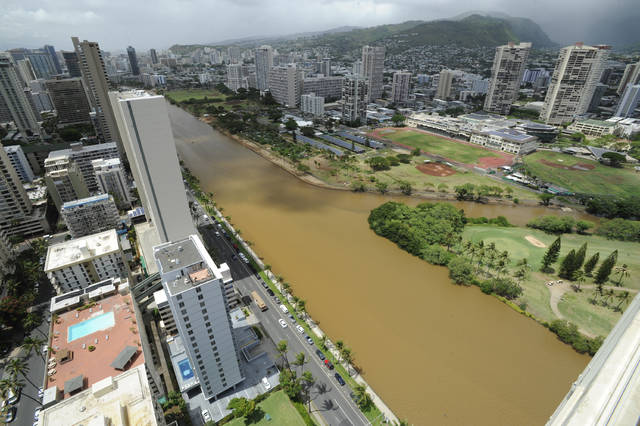
This project is funded by a grant/cooperative agreement from the National Oceanic and Atmospheric Administration (NOAA), Project A/AS-56 which is sponsored by the University of Hawai’i Sea Grant College Program, School of Ocean and Earth Science and Technology (SOEST), under Institutional Grant No. NA23OAR4690519 from NOAA Office of Sea Grant, Department of Commerce. The views expressed herein are those of the author(s) and do not necessarily reflect the views of NOAA or any of its subagencies. UNIHI-SEAGRANT-4859.


